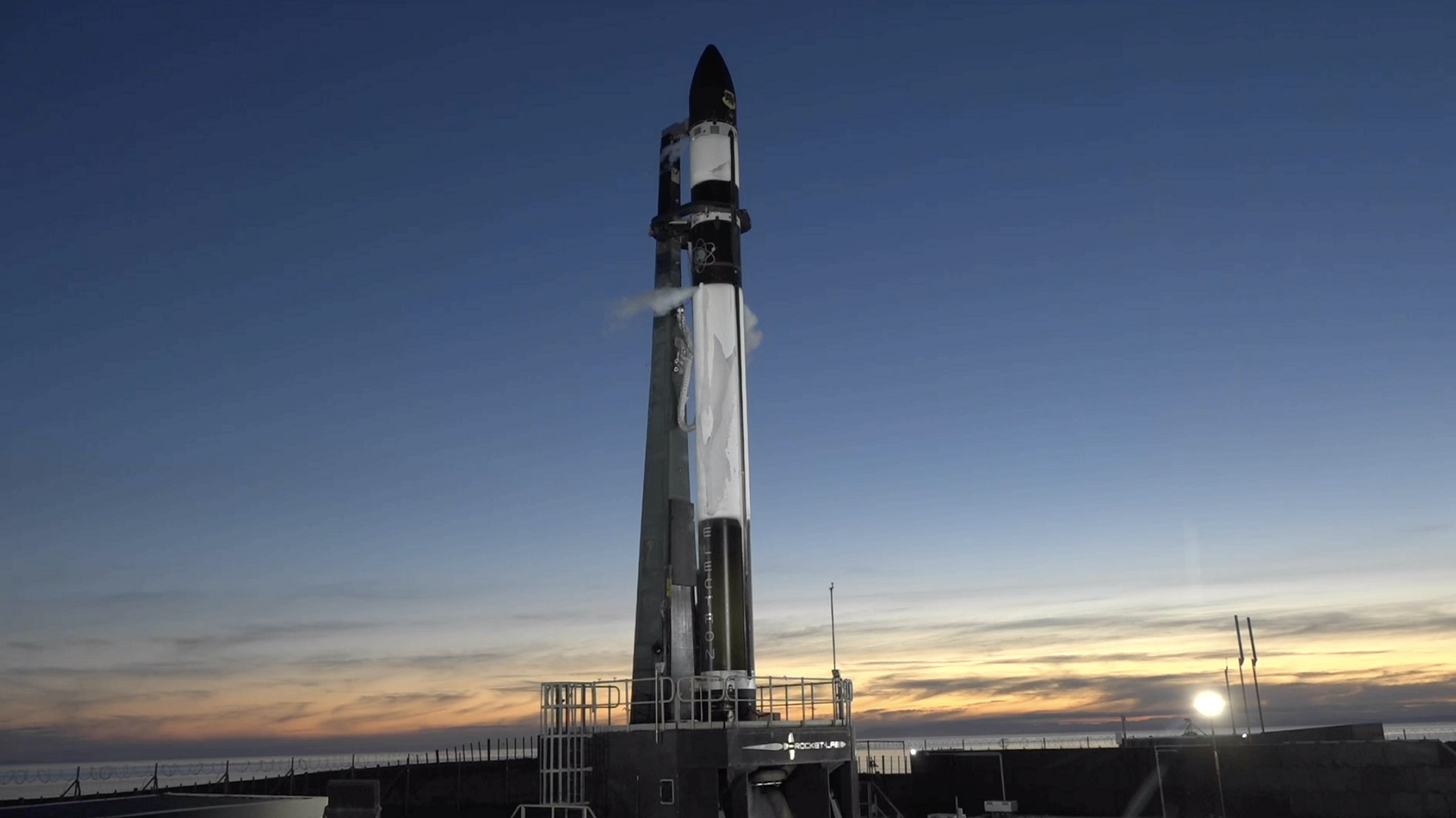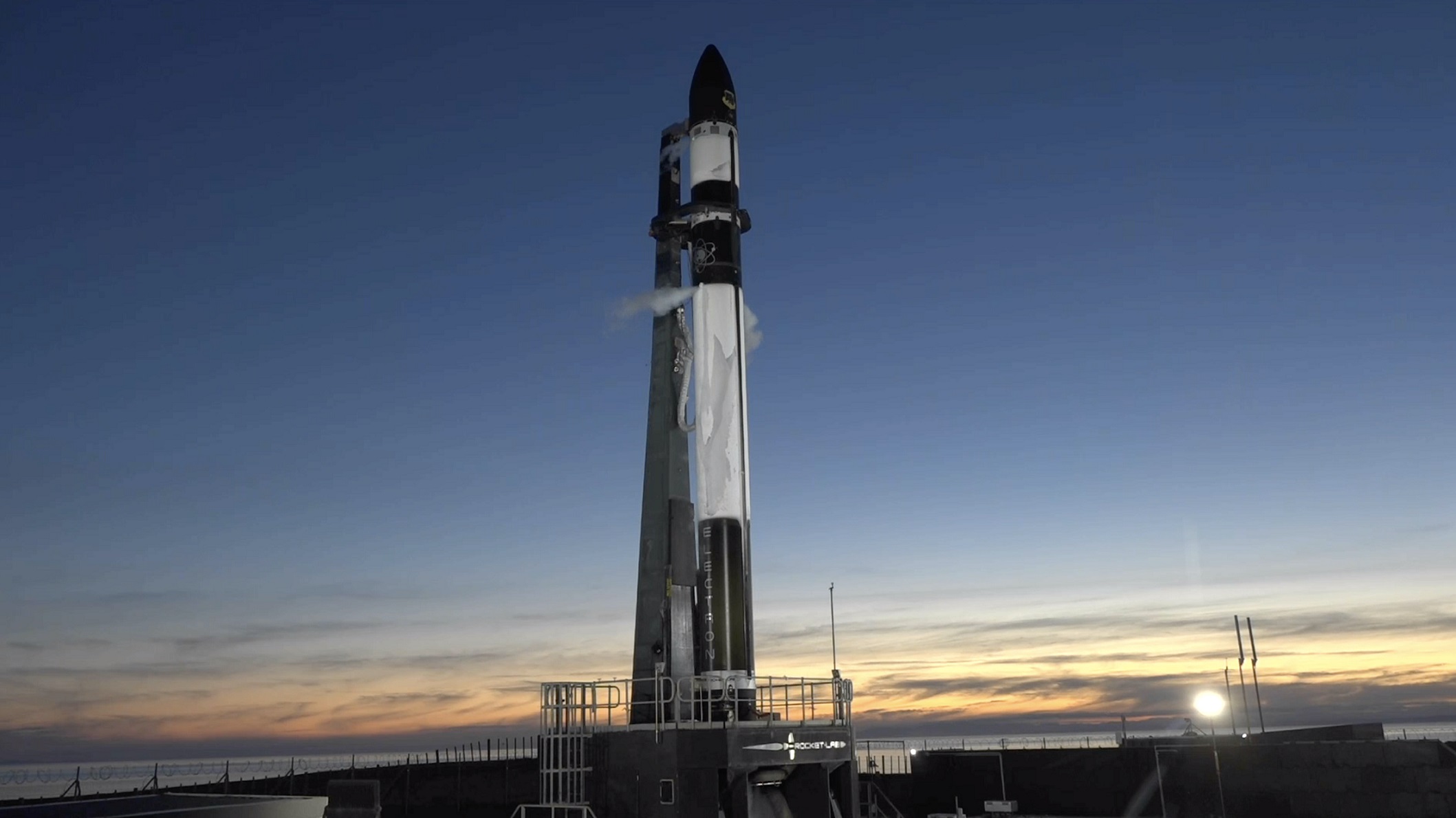
In-Depth View of Rocket Lab’s Electron Launch Vehicle
Throughout the space industry, you can see a few common themes between different agencies, companies, and the general industry itself. This includes the shift towards partial or full reusable launch vehicles, along with the increasing demand for launch services. Rocket Lab is no exception with the development, manufacturing, testing, and frequent launches of Electron.
Electron is Rocket Lab’s small-lift launch vehicle which has been consistently launching over the past few years. However, despite its large amount of missions, the company is still actively working to improve and innovate the launch vehicle. In addition, Electron features unique launch, power, payload, and other capabilities that make it stand out from other rockets in its class.
Taking a much closer look at Electron, you will find the meticulous work Rocket Lab put into every aspect from the construction to the cost. All of which play an important role in the current, past, and future success of not only Electron but Rocket Lab as well. Here I will go more in-depth into the Electron launch vehicle and what makes it so special from other small-lift rockets in the industry.
Electron Overview

Electron has quite an impressive history since its first launch in 2017. Since then Rocket Lab has continued to develop and improve the rocket along with continuing to launch it more frequently as time has gone on. We can first take a look at Electron’s first stage. This stage consists of nine sea-level Rutherford engines, linerless common bulkhead tanks for LOx and RP-1, an interstage, and a power pack. Rutherford is an electric pumped LOx and kerosene engine specifically designed for the Electron launch vehicle. Rutherford utilizes an entirely new electric propulsion cycle, making use of brushless DC electric motors and high-performance lithium polymer batteries to drive its propellant pumps. This cuts down on much of the complex turbomachinery typically required for gas generator cycle engines, meaning that the Rutherford is simpler to build than a traditional engine but can achieve 90% efficiency. 130 Rutherford engines have been flown to space on Electron as of July 2020. Since then, this number has increased quite a bit. Rutherford is also the first oxygen/hydrocarbon engine to use additive manufacturing for all primary components, including the regeneratively cooled thrust chamber, injector pumps, and main propellant valves. The Stage 1 and Stage 2 Rutherford engines are identical, with the exception of a larger expansion ratio nozzle for Stage 2 for improved performance in near-vacuum-conditions. All aspects of the Rutherford engines are completely designed in-house and are manufactured directly at Rocket Lab’s Long Beach headquarters in California, USA. In addition, this stage is intended to be caught and refurbished for future missions to save both time and money.
Next is the second stage. Electron’s second stage consists of a single vacuum optimized Rutherford engine, and linerless common bulkhead tanks for LOx and kerosene. With an expanded nozzle, Electron’s second stage engine produces 5,800 pounds of force and has a specific impulse of 343 sec. The 1.2 m diameter second stage has approximately 2,000 kg of propellant on board. The Electron Stage 2 has a burn time of approximately five minutes with a Rutherford vacuum engine as it places the Kick Stage into orbit. High Voltage Batteries (HVBs) batteries provide power to the LOx and kerosene pumps for the high-pressure combustion while a pressurant system is used to provide enough pump inlet pressure to safely operate. During the second stage burn, two HVBs power the electric pumps until depletion, when a third HVB takes over for the remainder of the second stage burn. Upon depletion, the first two HVBs are jettisoned from Electron to reduce mass and increase performance in flight.
At the very top of Electron, you have the kick stage. This acts as a third stage and increases the capabilities of the launch vehicle significantly. For extended missions, Rocket Lab offers Photon, this is the upgraded version of the standard kick stage that offers unique opportunities like sending payloads to the Moon, Mars, and beyond. These additional stages help make the small-lift launch vehicle stand out from others in its class.
Finally, at the very top of Electron are the fairings. Electron’s payload fairing protects the payload from encapsulation through flight. These fairings are a composite split clam shell design and includes environmental control for the payload. During separation, each half of the fairing is designed to rotate on a hinge away from the payload, resulting in a safe separation motion. Within the fairings of Electron, you have the opportunity for many different payload configurations depending on the Mission. This includes a single primary microsatellite, through to multi-satellite missions comprised of several micro and CubeSats. For multi-satellite missions, Rocket Lab offers custom configurations for secondary payload adapters. Electron even offers an extended fairing option for larger payloads. Customers can contact Rocket Lab and figure out the exact dimensions needed and the possibilities of Electron.
In-Depth Look

Now that we have a better idea of the Electron design and main launch vehicle features, we can take a closer look at its performance and internals. Starting with Electron’s performance, the small-lift launch vehicle is designed to place payloads of up to 200 kg into a circular SSO at 500 km altitude, however, Rocket Lab points out they can accommodate a wide range of different payload and orbit requirements. One of the most common orbits requested by customers is a Sun-synchronous orbit (SSO). Rocket Lab operates two launch sites; Launch Complex 1 on New Zealand’s Māhia Peninsula, and Launch Complex 2 within the Mid-Atlantic Regional Spaceport at the NASA Wallops Flight Facility in Virginia. From Launch Complex 1, Electron can be flown on trajectories of inclinations ranging from 39 degrees to 120 degrees. Additional inclinations outside of this range may also be possible upon request. From Launch Complex 2, Electron can be flown on trajectories of inclinations ranging from 38 degrees to 60 degrees. Additional inclinations outside of this range may also be possible upon request. The option to launch from two different launch complexes located in different spots of the world gives Rocket Lab and its customers a lot more options. In addition, with the recent completion of Rocket Lab’s second launch pad at LC-1, they can accommodate more missions.
We then have the avionics helping control Electron. Specifically, Rocket Lab has designed high-performing avionics and flight computer systems, including in-house assembly and testing. The computing nodes make use of state-of-the-art Field Programmable Gate Array (FPGA) architecture, allowing massive customization of function while retaining hardware commonality. Rocket Lab performs avionics validation not only at the component level, but also in its sophisticated hardware-in-the-loop (HITL) test facility which allows for integrated launch vehicle and software simulation and testing. The Electron launch vehicle is equipped with a proven, Federal Aviation Authority (FAA) certified autonomous flight termination system which has been in use on Electron since 2019. The system safely terminates the flight of the vehicle automatically if mission rules are violated.
Finally, you have the flight environments within the launch vehicle. Rocket Lab points out that Electron’s payload environments provide the most secure and smooth ascent to orbit on the market. Here Rocket Lab can perform a mission specific Integrated Thermal Analysis (ITA) as part of the launch service statement of work on request, including incorporating data from previous flights to further refine launch environments. The fairing environment is controlled from encapsulation through deployment, with a maximum relative humidity of 65%. In terms of acceleration loads, the payload will be subjected to a range of axial and lateral accelerations during flight. The maximum predicted load factors will typically be within the envelope shown in a figure provided by Rocket Lab. This envelopes both static and dynamic loads. Mission specific accelerations will be determined via coupled loads analysis and provided in the mission ICD. Rocket Lab also provides in-depth values and figures for shock, acoustics, radio frequency, and more. A rocket launch is a very violent process that can easily damage not only the launch vehicle but the payload inside if different factors are not properly considered. This is why Rocket Lab has put so much effort into ensuring the payload is safe within the fairings during the entire launch process. All the way up until it is released and put into the designated orbit.
Conclusion
Over the past few years, Rocket Lab has managed to become one of the fastest growing companies within the space industry. A massive reason for its success has been thanks to Electron. During this same time period, Rocket Lab has continued to improve the development, manufacturing, testing, and launch aspects of the rocket. Even right now in the middle of April, we are only days away from the first official mission with an Electron first stage catch attempt. This will likely change how the company uses the booster in the future and improves Electron’s capabilities. We will have to wait and see how it progresses and the impact it has on the space industry.
